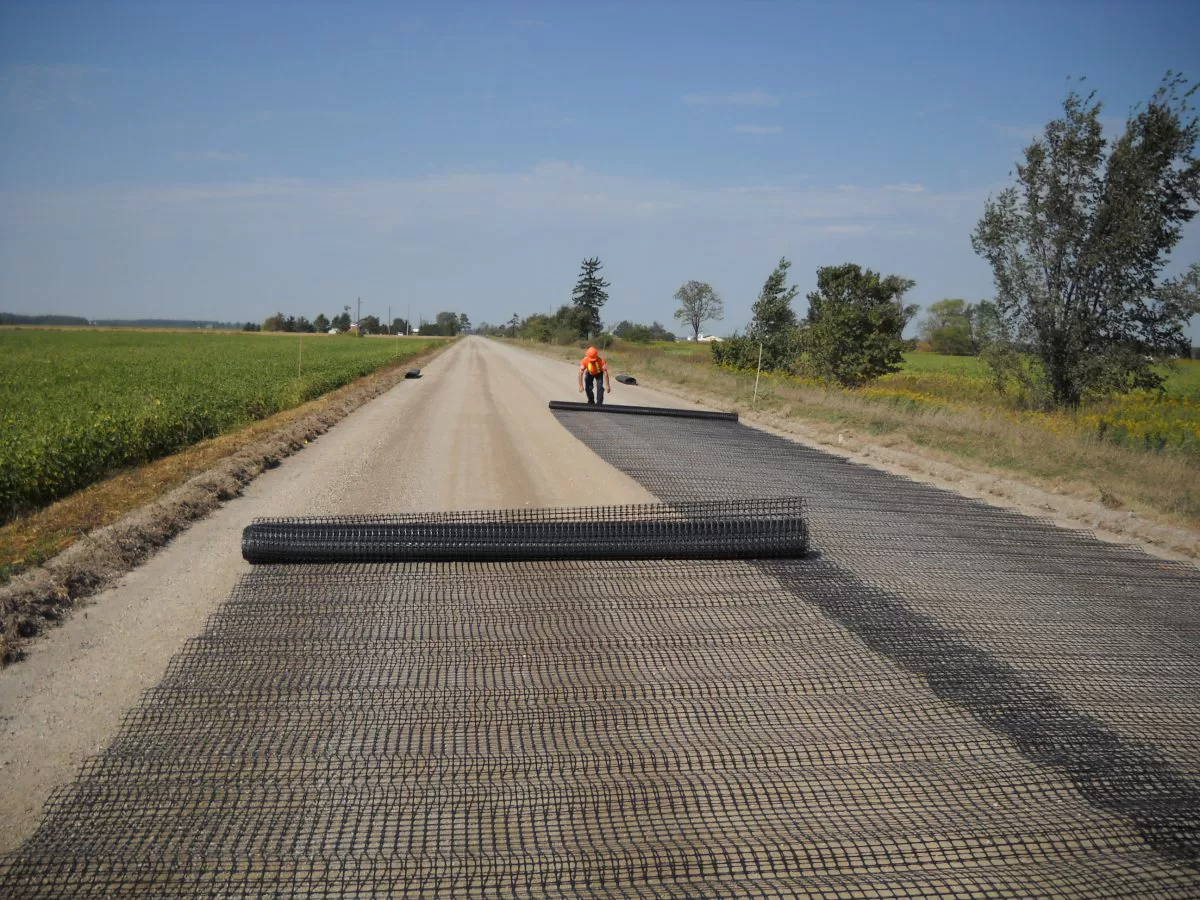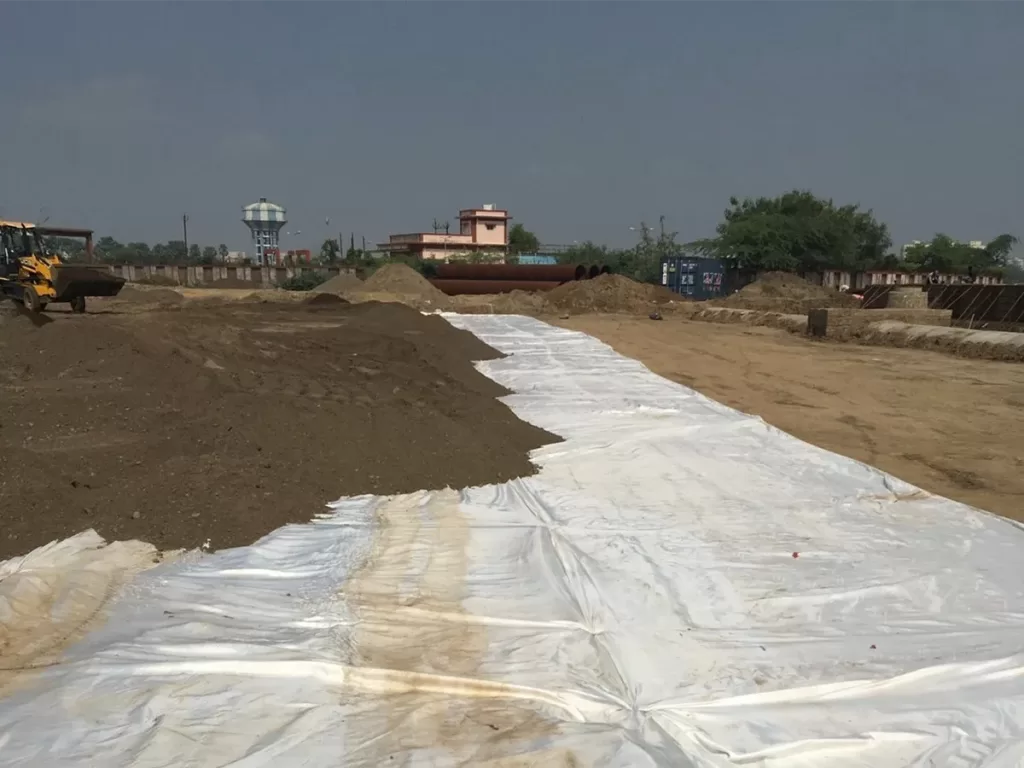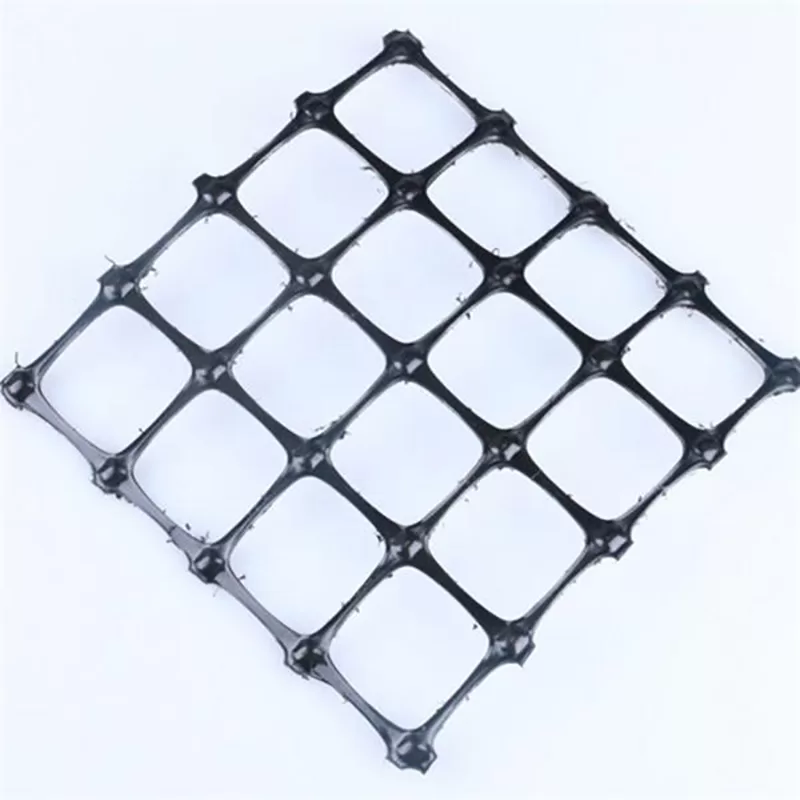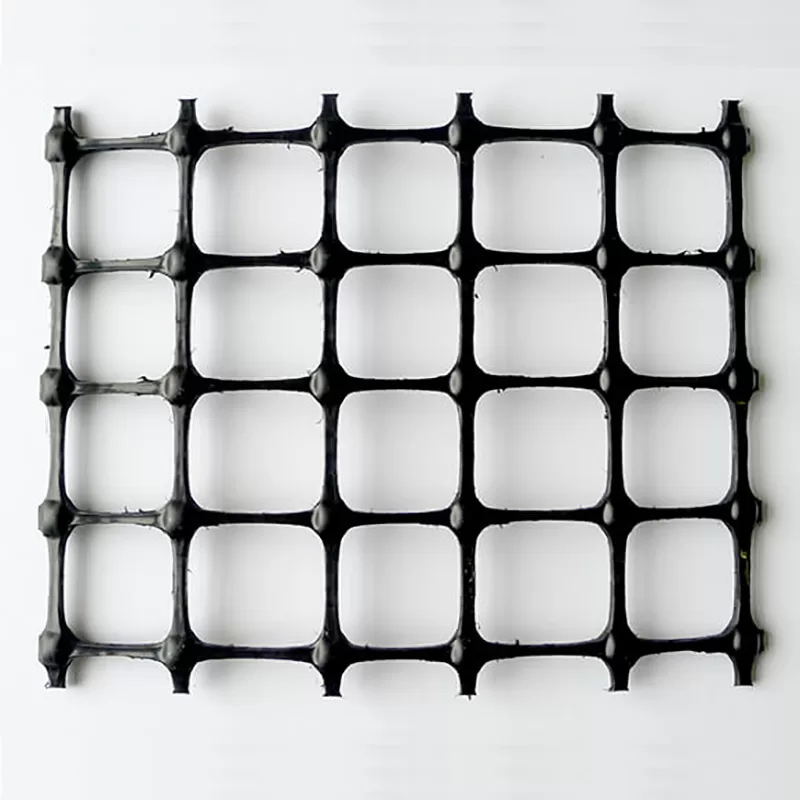+86-159 9860 6917
info@geofantex.com
geofantex@gmail.com
+86-400-8266163-44899
Civil engineering projects require reliable solutions for ground stabilization and soil reinforcement. Among these solutions, geogrids and geotextiles stand out as two key materials that, while similar in function, differ significantly in form and application. This article dives into the distinctions between geogrids and geotextiles, their unique properties, and their specific uses in engineering projects. Understanding these differences can help engineers select the most appropriate material for ensuring structural integrity and longevity in their construction projects.
What are Geogrids and How are They Used in Engineering?
Geogrids are specialized geosynthetic materials used in civil engineering and construction projects. They are typically made from polymers such as polyethylene, polypropylene, or polyester, and are formed into a grid-like structure with open apertures.
Uses and Applications in Engineering:
- Soil Reinforcement: Geogrids are primarily used to reinforce soil in various construction applications. They improve the stability of soil by distributing loads over a wider area and reducing the potential for settlement or deformation. This reinforcement is crucial in retaining walls, embankments, slopes, and foundations.
- Pavement Support: In road construction, geogrids are placed within the pavement layers to enhance the structural integrity. They help in distributing the load more effectively, reducing rutting, and extending the lifespan of the pavement.
- Erosion Control: Geogrids can be used in erosion control applications, such as stabilizing steep slopes or reinforcing soil in channels and embankments. By preventing soil erosion, they protect the underlying infrastructure and maintain environmental stability.
- Load Platform Construction: They are used to construct stable load-bearing platforms over weak subgrades. This application is common in temporary construction access roads, parking areas, and working platforms for heavy equipment.
- Retaining Structures: Geogrids play a crucial role in the construction of retaining walls and steepened slopes. They reinforce the soil behind these structures, allowing for steeper inclinations and reducing the space required for such installations.
- Landfill Engineering: In landfill construction, geogrids are used to enhance the stability and integrity of waste containment structures. They provide structural support and prevent the migration of waste materials into surrounding environments.
Working Principle:
Geogrids work by interlocking with the surrounding soil particles through their open apertures. This interaction creates a composite material that has improved tensile strength and load distribution capabilities. The grid structure resists the lateral movement of soil particles, thereby improving stability and reducing the risk of structural failure.
In summary, geogrids are versatile materials in civil engineering, offering solutions for soil reinforcement, pavement support, erosion control, and more. Their use enhances the durability and performance of infrastructure projects while minimizing environmental impact.

What are Geotextiles and What Role Do They Play in Construction?
Geotextiles are synthetic textile materials used in civil engineering and construction projects. They are designed to perform various functions when integrated into soil and structures. Here are some key roles they play:
- Separation: Geotextiles prevent the mixing of different soil types or aggregate layers. They act as a barrier, allowing water to pass through while preventing the mixing of fine and coarse materials.
- Filtration: They allow water to pass through while retaining soil particles. This prevents clogging of drainage systems and maintains the stability and performance of structures.
- Drainage: Geotextiles are used in drainage applications to facilitate the passage of water while preventing the movement of soil particles. This helps in managing groundwater levels and reducing hydrostatic pressure.
- Reinforcement: In areas where soil stability is poor, geotextiles can be used to reinforce the soil. They improve the load-bearing capacity of the soil and enhance the stability of embankments, slopes, and retaining walls.
- Protection: Geotextiles protect against erosion, abrasion, and mechanical damage. They can be used to protect geomembranes in landfills, prevent soil erosion on slopes, and protect waterproofing membranes in underground structures.
- Soil Stabilization: By distributing loads over a wider area, geotextiles help to stabilize soil and prevent settlement. This is particularly useful in road construction and other infrastructure projects.
Overall, geotextiles play a crucial role in enhancing the durability, performance, and longevity of civil engineering projects by providing solutions to various soil and environmental challenges.

What are the Key Differences Between Geogrids and Geotextiles?
Geogrids and geotextiles are both types of geosynthetics used in civil engineering and construction projects, but they serve different purposes and have distinct characteristics. Here are the key differences between the two:
Material Composition
- Geogrids: Typically made from polymers like polyethylene, polypropylene, or polyester. They have a grid-like structure with large openings.
- Geotextiles: Made from woven or non-woven fabrics, usually composed of polypropylene or polyester. They have a continuous sheet-like structure.
Primary Function
- Geogrids: Primarily used for reinforcement. Their grid structure allows them to interlock with the surrounding soil or aggregate, improving stability and load-bearing capacity.
- Geotextiles: Serve multiple functions, including separation, filtration, drainage, and reinforcement. They prevent the mixing of different soil layers, allow water to pass while retaining soil particles, and can also provide support to weak soils.
Structural Design
- Geogrids: Feature an open, grid-like structure with rectangular or square apertures. This design allows for efficient load distribution and reinforcement.
- Geotextiles: Have a continuous fabric structure, available in woven (with interlaced fibers) or non-woven (bonded fibers) forms, providing versatile applications beyond just reinforcement.
Applications
- Geogrids: Commonly used in road construction, retaining walls, embankments, and other applications requiring soil reinforcement and stabilization.
- Geotextiles: Used in a wider range of applications, including roadways, drainage systems, erosion control, and landfills, where separation, filtration, and drainage are crucial.
Applications
- Geogrids: Installed with the grid structure oriented to interlock with the soil or aggregate, often used in layers within the soil.
- Geotextiles: Laid as a continuous sheet over the soil, sometimes overlapping or seamed, depending on the specific application and required coverage.
Performance Characteristics
- Geogrids: Excellent tensile strength and resistance to soil movement, making them ideal for heavy load-bearing applications.
- Geotextiles: Varying properties depending on type (woven or non-woven), but generally offer good filtration, separation, and drainage capabilities along with moderate reinforcement.
Geogrids are specialized for reinforcement, particularly in soil stabilization and load distribution, due to their grid-like structure. Geotextiles are more versatile, used for separation, filtration, drainage, and sometimes reinforcement, thanks to their fabric-like design. The choice between them depends on the specific needs of a construction or engineering project.
Can Geogrids and Geotextiles Be Used Together in Projects?
Yes, geogrids and geotextiles can be used together in construction and civil engineering projects. Combining these two types of geosynthetics can enhance the performance of a project by leveraging the unique strengths of each material. Here’s how they can work together:
Reinforcement and Separation
- Geogrid for Reinforcement: Geogrids are primarily used for reinforcement purposes. They provide tensile strength and stability to soils, particularly in applications like retaining walls, roadways, and embankments.
- Geotextile for Separation: Geotextiles, when used in conjunction with geogrids, can serve as a separation layer. They prevent the intermixing of different soil layers while allowing water to pass through, maintaining the integrity of the reinforced soil structure.
Enhanced Stability and Durability
- Combined Application: In projects where soil reinforcement is critical, such as in road construction or embankment stabilization, geotextiles can be placed beneath the geogrid. This setup ensures that the soil layers remain separate, reducing the risk of settlement and maintaining the overall stability of the structure.
- Example: In a road construction project, a non-woven geotextile might be placed directly on the subgrade to act as a separation and filtration layer. A geogrid could then be installed on top of the geotextile to provide reinforcement, improving the load-bearing capacity of the road.
Drainage and Filtration
- Geotextile for Filtration: Geotextiles can also be used for filtration, preventing fine soil particles from migrating into drainage systems while still allowing water to flow freely. This is particularly important in applications like retaining walls, where proper drainage is crucial to avoid water pressure buildup.
- Geogrid for Reinforcement: When used in tandem with a geogrid, the geotextile can ensure that the reinforced soil remains well-drained, further enhancing the stability of the structure.
Erosion Control
- Geotextile for Erosion Control: In slope stabilization projects, geotextiles can be used to protect against surface erosion by covering the soil and allowing vegetation to establish roots.
- Geogrid for Structural Support: A geogrid can be installed beneath the geotextile to provide additional support to the soil, preventing deeper erosion and slippage.
Cost-Effectiveness
- Optimized Design: Using geogrids and geotextiles together can optimize the design of a project, potentially reducing the amount of material needed and lowering overall costs while still achieving the desired structural integrity and performance.
Using geogrids and geotextiles together in a project combines the strengths of both materials—geogrids for reinforcement and geotextiles for separation, filtration, and drainage. This combination is particularly beneficial in applications such as road construction, retaining walls, embankments, and erosion control, where enhanced stability, durability, and performance are required.
Geogrids and geotextiles are fundamental materials in the field of civil engineering, each serving distinct roles that capitalize on their unique properties. While geogrids are indispensable for applications requiring robust tensile reinforcement, geotextiles excel in protecting soil quality through filtration and separation. Understanding the specific capabilities and best use cases for each can significantly enhance the effectiveness of construction projects. When used together, they provide a synergistic effect that maximizes both performance and longevity, ensuring the structural health of civil engineering endeavors.



Get Free Sample
We’ll respond as soon as possible(within 12 hours)






















